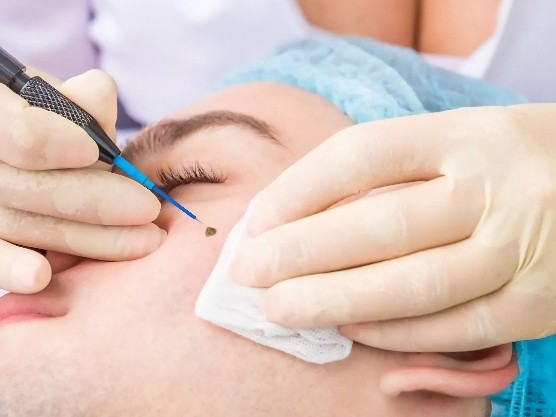Moles are common skin growths that can appear anywhere on the body. While most moles are harmless, some may require mole removal for medical or cosmetic reasons. Understanding when to remove a mole is crucial, as it can help prevent potential health risks such as melanoma or skin irritation. Whether you seek medical guidance or a cosmetic procedure, the decision to remove a mole should be based on expert advice. If you’re considering Mole removal in Dubai, consulting a dermatologist is the best step to ensure safe and effective treatment.
Signs That Indicate Mole Removal Is Necessary
1. Changes in Size, Shape, or Color
A healthy mole remains consistent in size, shape, and color. However, if you notice any changes, it could be an early sign of skin cancer.
✅ Asymmetry: One half of the mole looks different from the other.

✅ Border Irregularity: Edges become ragged, blurred, or uneven.
✅ Color Variation: The mole contains multiple shades of brown, black, red, or white.
✅ Diameter Growth: A mole larger than 6mm should be evaluated.
✅ Evolving Nature: Any change in texture, size, or color over time.
2. Bleeding or Itching Moles
Moles that itch, bleed, or form scabs without any injury could indicate abnormal cell growth, requiring immediate attention.
✅ Persistent Bleeding: Continuous bleeding without an external cause.
✅ Scabbing or Ulceration: Crusting or sores forming over the mole.
✅ Unusual Itching: Constant irritation or discomfort.
3. Moles Located in High-Friction Areas
Some moles can be problematic due to their placement on high-friction areas of the body.
✅ Under Clothing: Constant rubbing from clothing can cause irritation.
✅ On the Scalp: Moles can interfere with hair brushing or styling.
✅ Around Joints: Elbows, knees, and fingers may experience discomfort.
4. Cosmetic Concerns
Many individuals opt for mole removal for aesthetic reasons, especially when a mole appears in a visible area like the face, neck, or hands.
✅ Facial Moles: Affecting confidence and self-esteem.
✅ Unattractive Growths: Moles that disrupt skin smoothness.
✅ Uneven Skin Tone: Some moles may cause skin discoloration.
Methods of Mole Removal
1. Surgical Excision
A dermatologist surgically removes the mole and stitches the wound closed.
✅ Complete Removal: Ensures no recurrence.
✅ Biopsy Option: Allows checking for cancerous cells.
✅ Suitable for Large Moles: Best for deep-rooted moles.
2. Shave Excision
A less invasive method where the mole is shaved off using a blade.
✅ Quick Procedure: Minimal downtime.
✅ No Stitches Required: Healing is faster.
✅ Best for Raised Moles: Works well for protruding moles.
3. Laser Mole Removal
A non-invasive option using laser energy to break down mole pigments.
✅ No Scarring: Suitable for smaller, superficial moles.
✅ Minimal Pain: A comfortable procedure.
✅ Fast Recovery: Healing within a few days.
4. Cryotherapy (Freezing)
A freezing method using liquid nitrogen to destroy mole tissue.
✅ Quick and Easy: A fast procedure with minimal discomfort. ✅ No Need for Surgery: Non-invasive technique.
✅ Effective for Small Moles: Ideal for superficial moles.
Post-Removal Care
After mole removal, proper care is essential for smooth healing and to prevent infection.
✅ Keep the Area Clean: Wash with mild soap and water.
✅ Avoid Sun Exposure: Use sunscreen to prevent scarring. ✅ Apply Antibiotic Ointment: Helps prevent infection.
✅ Follow Dermatologist’s Advice: Essential for proper healing.
When to See a Dermatologist
If you’re uncertain about a mole’s appearance or experience unusual symptoms, seek medical attention immediately. Early detection of skin abnormalities can prevent serious health concerns.For those considering mole removal in Dubai, professional dermatologists offer advanced procedures tailored to your needs, ensuring safety and precision.
